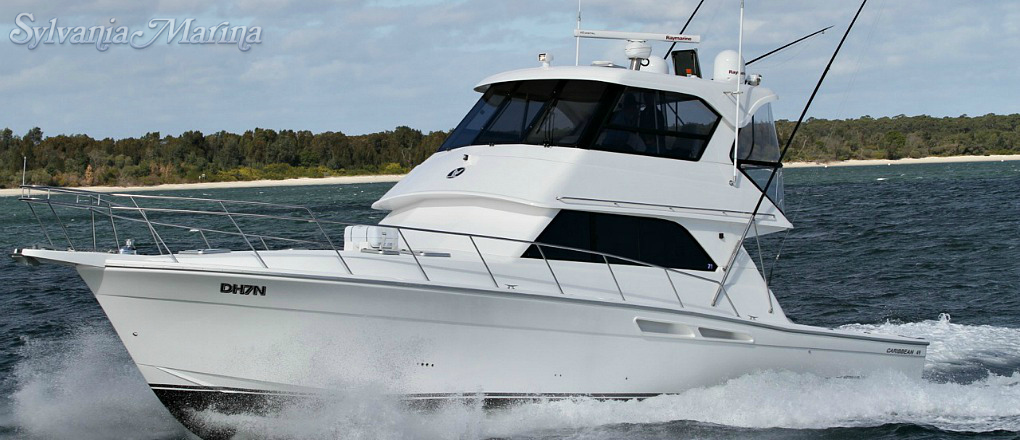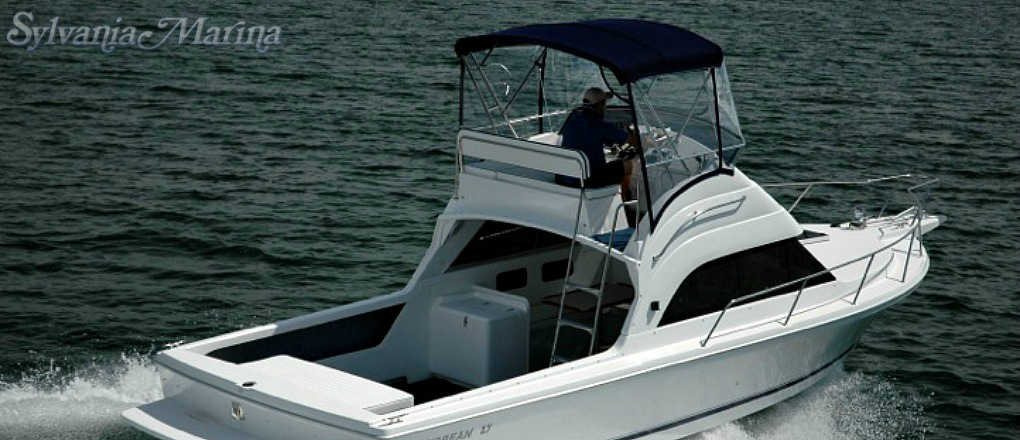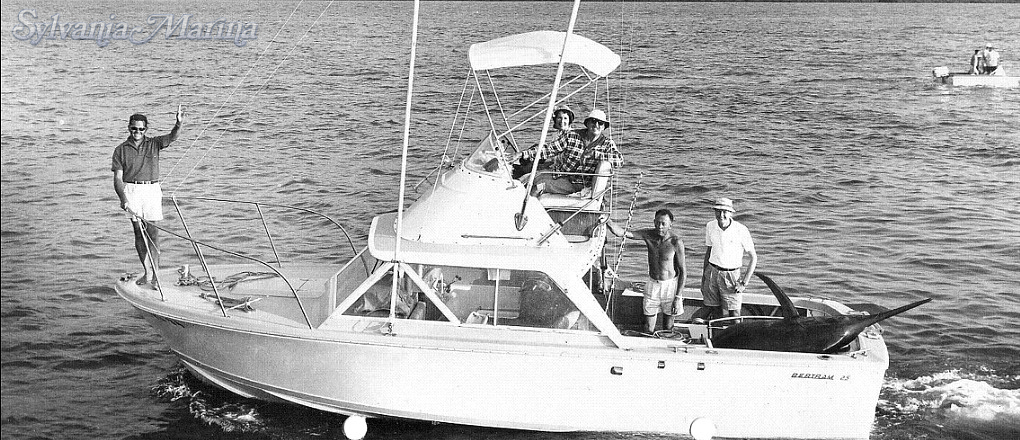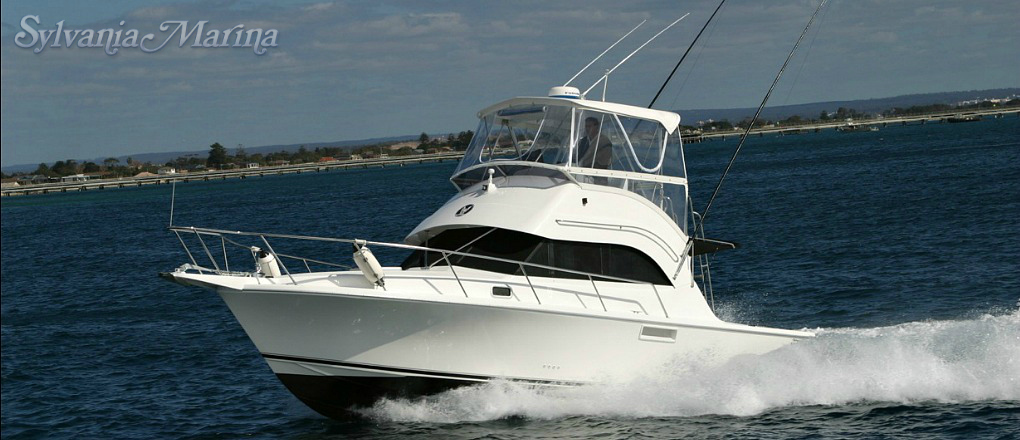1998 Caribbean 35 Boat review

Quiz time. Competitors, check your buzzers. Okay, your time starts now… What do King Kong, Two Dogs, Moonshine, Rampage, Bacardi II, Movin’ On, Gamefisher, Take Time, Fish Tales, Black Pete and Ulysses have in common?
Buzzzz … They’re all… Ahhh … Errr… Ummm … They’re the names of Betty Windsor’s corgis?
No, I’m sorry, Dave, we can’t take that. We’re talking gameboats here. Five demerit points and a kick up the backside.
Next, for a pick of the board, who am I? I was born in Melbourne around 1970 and soon rocketed to stardom in gamefishing circles. I was the best-performing model in my class and there are more than 300 of me running around Australia today. My first name starts with B and my second name begins with T. I am…
Buzzzz… Ahhh … Errr… Ummm … A blue-tongued corgi? Wrong. Buzzzz … British Telecom? D’Oh. Buzzzz… A Bertram 35?
By gees, you’ve finally got it!
It’s the Bertram or more correctly Carribean 35, the most popular production gameboat ever built in Australia – still going, as strong as an ox, after almost 30 years.
If there is one gameboat to base a quiz question on, it would have to be the Caribbean 35. Among a plethora of boats which have come and gone; among a sea of models immodestly described as classic, evergreen and timeless; this is the one.
The Bertie 35 – it’s the right answer in the game of fishing.
PROOF IS IN THE PUDDING
Made by International Marine in Victoria, the Bertie 35 emerged way back in the early ’70s when sideburns and big hair were all the rage. Though the hull changed in the early ’80s, becoming fuller in the bow to accommodate a second cabin, it’s still clearly recognisable on the water.
Designed by that rather excellent marine architect, Raymond Hunt, the deep-V hull has earned more stripes than any other in the department of unfailing seaworthiness. While there are between 300 and 400 Bertie 35s plying the oceans around Australia today, it’s unlikely that any one of them will come unstuck by anything but driver error.
Jan and Finn Crutch, Caribbean dealers in Pittwater and keen gamefishers, are among those who have run a 35 in both fair seas and foul. Their’s was fitted with 3208 Caterpillar diesel engines and, like most 35 owners, they fished off Sydney.
“It was just such a good sea boat,” recalls Finn, who now owns the spectacular 45-foot Carribean, Two Dogs.
“There were no seas that you’d be worried about out there in the boat. And it didn’t fall apart,” he says. “They are a big boat for their size, comfortable to use, and affordable to operate,” he adds.
“We went as far south as Wollongong and as far north as Port Macquarie, running up against other boats on the way.
When it turned ugly, not much else of its size could keep up with us. I went to Cairns on Rampage (another 35) and we were out there in 40-50kt (75-95kmh) of wind. But at no time were we worried about the boat.
Owned by Glen Page and also fished through Broken Bay GFC, Rampage has seen some “hell-sharks” (500kg tigers) caught from it over the years. In fact, Page and crew have fought giant fish all day and all night, through all weather, many times over and proven that you don’t need any more than a 35 to catch big fish.
“I guess that’s what it comes down to. You can stay with a good fish in this boat despite the weather,” says Finn.
BACK TO THE FUTURE
This was, in a sense, a revisit for me. I’ve been on several 35s before and all of them have been much the same – good, honest, well-proportioned twin-cabin flybridge cruisers, devoting just the right amount of room to fishing, accommodation and comforts. It’s these three needs that the 35 seems to juggle so well.
Though the 35 remains largely unchanged on the outside, over the last five years there have been some subtle refinements within. While the boat is developing slower than many would like, the changes have at least brought the interior closer to the classiness of its competitors.
In 1993, a step-down galley was added. In 1996, the vee-berth in the bow was swapped for a better angled double berth. Also, the controls on the lower station were taken off the dash and placed down near the wheel; the saloon lights were changed to recessed halogen down-lighting; the self-tapers were removed around the cockpit coamings; and the battery switch was taken out of the bilge and put under the dash. And the mouldings and the furnishings have also become more contemporary.
The review boat, for example, had a nice teal-blue carpet and a stripey blue-and-yellow fabric for the pelmets, curtains and the scatter cushions. Then again, the ubiquitous light-grey headliner and grey marine vinyl trim upholstery remains as it has for decades.
Thus, the interior photographed was the 35 parked next door to our test model. It was of a similar vintage, but with a sharper, more classical finish. Perhaps its appeal has something to do with the fact that it has white-marine vinyl upholstery, not slate-grey.
DESIGN THAT WORKS
The first thing you notice when you step inside the Carribean is the ample width of the sliding companionway doors. They are mounted centrally and, when open, it’s only a few steps to action stations if you’re caught inside with your pants down.
A small dinette to port has the ability to seat four for dinner or convert into an impromptu double berth. The table itself is moulded fibreglass, which is easy to clean. But the cushioning and backrests on the lounge could be thicker and more sumptuous. At least there was storage space underneath them.
Opposite is a settee suitable for grabbing a catnap at sea or for sleeping a merry crewman during tournament celebrations. The settee is also the place to kick back and watch the lures, since it’s actually just a few strides from the cockpit. Storage for hardware exists under the lounge in two drawers.
The lower helm station, unappealing as it is to serious gamefishers, is now a better item than it used to be. It features storage recesses for personal effects, more ergonomic mounting points for the dual engine controls, a sturdy wheel, plenty of room for the engine gauges and essentially a more modern module.
You could mount some electronics here, although the dash is better taken up (as it was on the testboat) with a small television set for those long, hot summer days when the fish aren’t biting, but the cricket’s hot to trot.
A GREAT GALLEY
Down one step is the galley on a mezzanine level. It’s U-shaped – as all good galleys are – and includes ample bench space for slicing a big baguette and serving lunch at sea. The benches are finished in grey grain coat with smart teak edging. The stainless sink is small but deep, with a single-action hot and cold tap, while there are three drawers and two cupboards alongside for cutlery, crockery and stores.
There’s also a 77-litre Engel fridge and (how flash!) a two-burner electric Miele stove and Sharp microwave. Beneath it are two more drawers.
The floor itself was quite snazzy, with light wood parquetry.
All up, there are better than adequate facilities for weekend and day trips, which is what a 35 is most often used for.
Importantly, light streams inside and fresh air is easy to come by. There’s room to move and sit down. And for lazy gamefishermen, most surfaces only need to be wiped down at the end of the day.
TIME FOR BED
Head down three steps, turn right and there you’ll find it – a guest’s cabin which can be used as crew or kids’ quarters. Storage is light on, with just three drawers, and floor space is thin on the ground. But there’s room enough on the single bunks to gain a decent night’s sleep.
The beds are long and wide enough for someone lumped with even the editor’s great girth and, again, fresh air can be directed inside through the twin opening portholes. There’s also some hard-to-access storage under the bunks.
The finish also includes a marine-vinyl liner – grey, of course (Ed: matching the tester’s hair) – on the cabin walls and front-runner around the edging. There was a reading lamp, halogen downlighting, and a door that shuts for privacy when the sun goes down.
The owner’s cabin in the bow didn’t seem to suffer from the slap, slip, slop of water hitting the chines, as did the guest’s cabin.
With a big, offset double berth, a vanity unit with hanging locker, cupboard and mirror, underbed drawers, plus storage lockers and twin sidepockets, there was enough room to pack the Sunday best.
The cheery blue-and-yellow beach theme in the saloon was carried forward to the trim in this cabin. Together with the shell-patterned doona covers and pillows, the feeling was just like a holiday house afloat. Again, a hatch directs plenty of light and fresh air inside.
I’m not usually one to get turned on by bathrooms, but the Bertie 35 has a generous one. There’s headroom throughout, a separate shower stall, a nice big vanity with sliding doors and recesses for personal effects, and a toilet which can be sat on comfortably.
EXTERIOR GLOSS
While the Bertie 35’s interior is perhaps best described as honest, the exterior promises much more.
In fact, the cockpit is big enough to battle the biggest fish in the sea – grander sharks and marlin are well within the realms of possibility in this boat.
The cockpit is deep, safe and uncluttered. Under the bridge ladder is a moulded sink unit and a hand-held hot and cold shower, with a saltwater deckwash nearby for cleaning up the fishy spills.
Opposite is an icebox big enough to swallow a pile of bait or a week’s supply of coldies – take your pick.
Both the little sidepockets in the cockpit and this icebox need a drain plug. You could also add a gamechair, and if you’re looking for more storage, the lift-up carpet hides a rather large locker, which comes in handy.
A step from the cockpit leads to the side-decks, which are backed with high stainless steel rails so you can reach the foredeck safely at sea.
There’s a push-button windlass to look after anchor retrieval.
TOP BRIDGE
The flybridge is simply one of the best going. The view into the cockpit is huge, the view of the road ahead clear, and there’s enough room to sit with a couple of mates and chat as you power out to sea.
Though accessed up an old-fashioned ladder comprising six narrow rungs, the finish and the layout up top are surprisingly modern.
There is a lounge to port and another in front of the helm console. Both of these will seat a few people or alternatively, act as ‘stretcher beds’ for grabbing a quick nap during the heat of the day.
The twin helm chairs are especially comfortable. The skipper’s seat is also adjustable so you can drive on your feet or your behind.
Dash space is ample for mounting the control panels for the twin Cummins engines, a Ritchie compass, Clarion remote stereo unit, and navigational and fish-finding electronics on the top of the dash, angled back towards the skipper.
HOOKED ON CLASSICS
The wheel is a timeless stainless number and, even though our boat had dual engine controls, it could be driven, spun, backed, idled and propelled very easily.
It’s a boat which you feel in control of, but which takes control of the conditions.
Without using the trim tabs, the twin 330hp Cummins motors zip the 35 up to planing speed, where it rides along with a nice but not overtly bow-high attitude.
At 2000rpm, it cruises at 20.9kt (39kmh) At 2500rpm the motors thrust the hull to 28.5kt (53kmh) and top speed is around 30kt (56kmh) – as all good gameboats should be these days.
Because the 35 has changed little, it still commands good money on the secondhand market. Volvo-powered (twin 250hp motors giving 27kt), it will cost around $180,000. Cat-powered (twin 350hp motors giving 32kt), it is more likely to be over $200,000. Brand new, you’ll need $280,000 to $300,000.
That’s about the winnings of a good week on Sale of the Century. Or a year on The Wheel of Fortune. Or a lifetime as a soldier of fortune, which is what the Carribean 35 surely is after almost 30 years at the front line.
| CARIBBEAN 35 |
| Price as tested $302,000 |
| Options fitted |
| Flybridge clears; cockpit and flybridge carpet; sun awning, outriggers; rod holders; rocket launcher, Cetrek 345 Chartplotter, Cetrek 730 autopilot; Raytheon 850 colour sounder; Miele cooktop and microwave oven. |
| Base price $280,160 With twin 330hp Cummins |
| Hull |
| Material: GRP |
| Type: deep-vee mono |
| Deadrise (at transom): not given |
| Length: 10.67m |
| Beam: 4.03m |
| Displacement: 8500kg |
| Fuel capacity: 1350lt |
| Water capacity: 405lt |
| Engines (as tested) |
| Make/model: Twin Cummins B-series |
| Rated hp (ea): 330hp |
| Type: inline six-cylinder turbo diesel |
| Displacement (ea): 5900cc |
| Weight (ea): 572kg |
| Supplied by Sylvania Marina, Sylvania (NSW) tel (02) 9522 7430. |
**Review written June 1998







Connect With Us